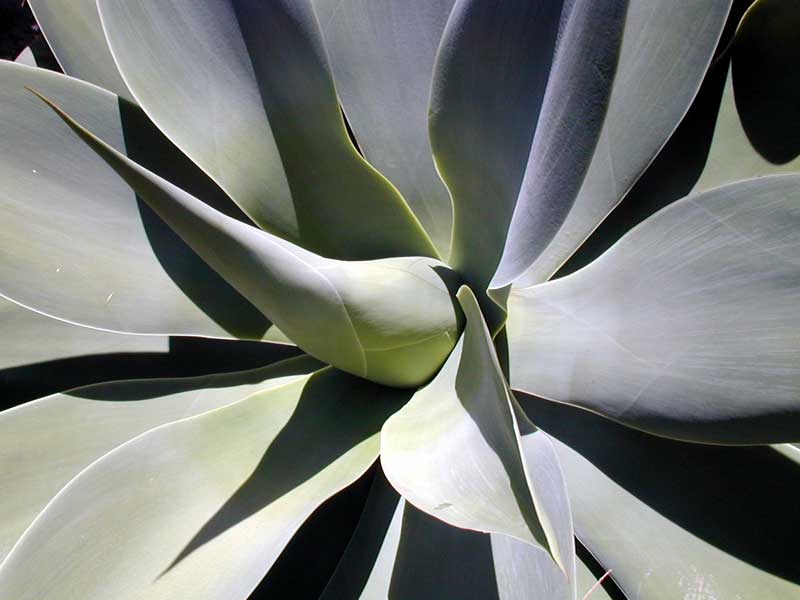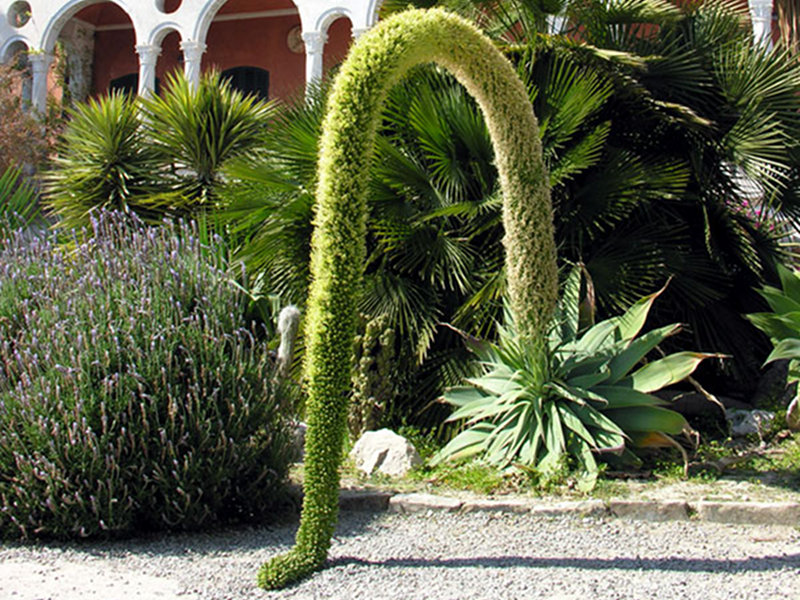Area protetta regionale Giardini Botanici Hanbury
www.giardinihanbury.comAgaves
Agaves: Origins, Geographical Distribution, and Ecology
The genus Agave includes more than 200 species coming from America: in
particular from the dry and warm areas of the western United States, of
Mexico, of Central America, and of the Caribbean Basin. Mexico is the
heart of the diversity of the genus, with more than 125 species.
Most of them live in dry environments, from the sea level up to an
altitude of about 2,400m a.s.l.: deserts and dry plains, hills or
coasts. Some species can be found on mountain rocky substrata within
mixed temperate-tropical forests.
Agaves live in regions with temperatures which in summer go regularly
beyond the 40°C and in winter can go behind the -10°C.
Some species present a considerable resistance to cold. The original
agaves of the northern areas of California, Nevada, New Mexico, Arizona
and Utah are the most resistant to low temperatures. Agave utahensis, A. parryi, A. neomexicana and a few others can resist to temperatures lower than -17°C.
Others, like A. palmeri, A. chrysantha, A. lechuguilla,
which come from mountain regions, tolerate temperatures until -10°C
without being seriously damaged. The resistance to frost is higher if
the air is drier and the soil reclaimed.
Agaves: History and Importance of the Collection in Hanbury Botanic Gardens
The first group of agaves was introduced on the Mortola promontory
in June 1868. The collection was enriched in the immediately following
years.
The 1912 catalog lists 114 species; some of them bloomed
for the first time in Europe. After serious losses because of the war
and of the following abandonment, the collection has been recovered.
Nowadays it has been reordered and extended. Every year forty - fifty rosettes related to fifteen - twenty species bloom.
The diversity of agaves (Italian text)
Agaves-Man (Italian text)








